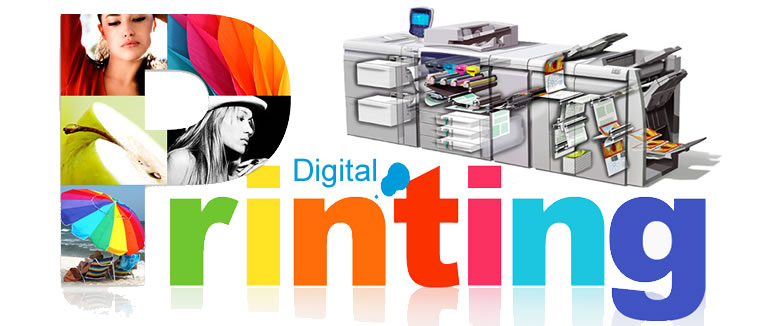Get This Report about Digital Printing
Get This Report about Digital Printing
Blog Article
What Does Digital Printing Do?
Table of ContentsThe 10-Second Trick For Digital PrintingSome Known Incorrect Statements About Digital Printing The Main Principles Of Digital Printing The 10-Minute Rule for Digital PrintingDigital Printing Fundamentals ExplainedSee This Report on Digital PrintingHow Digital Printing can Save You Time, Stress, and Money.The 9-Second Trick For Digital Printing
Personalization also permits companies to stand apart in a congested market by developing distinct marketing materials that separate them from their competitors. Among the major advantages of electronic printing is the capacity to publish variable information. Each published piece can be unique, enabling businesses to create customized marketing materials that speak straight to their target audience.Digital printing also permits for personalization in the layout of marketing products (Digital Printing). With electronic printing, businesses can develop styles that are special and customized to their certain needs.
Some Known Details About Digital Printing
This benefits businesses that want to examine various marketing techniques or release new items and services. By publishing smaller sized amounts of advertising materials, companies can minimize waste and stay clear of the need for excess inventory. Digital printing is also flexible. It can print on various products, consisting of paper, cardstock, vinyl, and metal.
By using different materials and formats, companies can develop distinct marketing materials that attract attention from their competitors and draw in interest from their target market. Digital printing also supplies uniformity. With standard printing methods, there is usually variant between prints because of differences in ink protection, stress, and various other aspects.
This consistency can aid construct customer depend on and credibility, showing that the organization is devoted to offering top quality products. Uniformity is especially crucial for organizations that wish to build client count on and trustworthiness. By making certain that every print corresponds, organizations can show that they are dedicated to offering high-grade products and focusing on the information.
How Digital Printing can Save You Time, Stress, and Money.

Additionally, electronic printing produces less waste due to the fact that it can publish as needed and in smaller sized quantities, decreasing the need for excess inventory and materials. Digital printing likewise uses much less power contrasted to traditional printing methods. Digital printers do not need as much power to operate, as they do not require to warm up as a lot or make use of as much power to run.
Digital Printing Fundamentals Explained

Balanced out printing calls for a plate for each color published. Standard countered printing is a print approach that utilizes light weight aluminum plates to transfer ink onto a rubber sheet (frequently referred to as a "blanket").
Digital Printing for Beginners
Offset printing allows for a wide range of print materials to be utilized during manufacturing. The high-quality photos generated via offset printing make it the favored method, particularly among visuals developers, when seeking the biggest color recreation, information, and professional-looking prints.
The fundamental printing approach continues to be offset. For electronic inkjet printing, ink is moved straight onto the published here surface area. Instead than counting on aluminum plates and rubber coverings to move a picture, electronic printing uses fluid ink during manufacturing. Traditional home inkjet printers are just one of the most usual electronic printing approaches.
A Biased View of Digital Printing
Since countered printing can blend personalized color inks for each job, it will naturally obtain the colors spot-on. Count on offset printing for tidy, distinct kinds and images without streaks or places.
It sets you back a whole lot to begin a countered job. You have to spend cash right into developing the plates, which takes time. As soon as you've invested it, all of the products are all set to go, and you'll invest less check my blog on huge countered work than an electronic print, which is concerning the same per item no issue just how large the work gets.
Each print is identical. You take the chance of less strange variations caused by imbalances in water and ink. Digital printing is much less costly for low-volume jobs. The have a peek at this site price each drops for electronic printing, so eventually, they crisscross. Transforming information within a solitary print task. For instance, state you were publishing out postcards promoting a performance.
10 Simple Techniques For Digital Printing
While electronic printing or inkjet printing is the recommended choice in the present times, there are compelling factors to convert from countered to digital printing systems. When printing balanced out or digitally, essential decisions and processes are entailed in color matching.
Industrial inkjet printing supplies adaptability for printing on many different substratums. Digital printing is ideal for consumers that do not call for longer runs and warehousing products.

One benefit of digital printing is selecting from a wide variety of electronic substratums. With digital printing, the price of the substrate in the general task is tiny.
Some Known Facts About Digital Printing.
drop-on-demand is the second printing innovation to consider. Continual inkjet systems need substantial upkeep, even more driver training, and greater downtime. Nevertheless, equipment prices in inkjet printing are far less than countered printing as there are no plate-making, plates, and press costs. Past the capital spending, the prepress tools and printing machine require highly skilled operators in offset printing, which adds labor prices.
Report this page